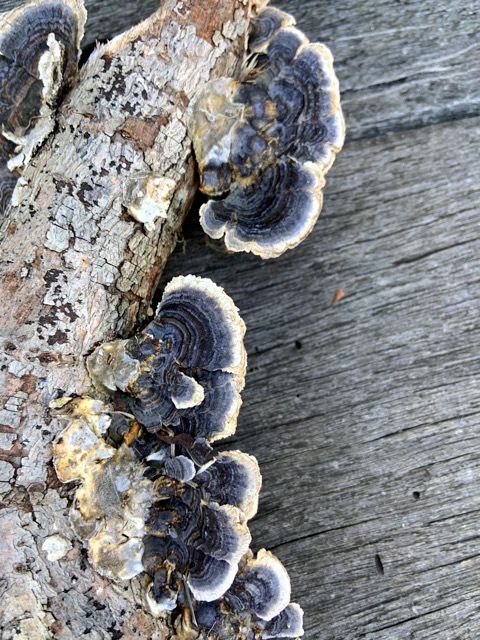Life Among The Golf Balls
Lynne Blundell

I’m not a fan of golf courses – nice for golfers but everyone else is locked out of large tracts of land, usually in prime locations. Sometimes though, they are havens for flora and fauna in suburbia and have at least halted the march of residential development.
In the Blue Mountains, just west of Sydney, there is a golf course, established in the early 1900s, where non-golfers are tolerated, as long as they stay off the serious sections. The trees on this course are a mix of native species, mountain pines and elderly fruit trees, some covered with lichen, like textured multi-coloured jackets. A favourite of mine is a Japanese quince, Chaenomeles japonica, with its thicket-type growth, viscious thorns and exquisite pastel flowers. Red wattlebirds, Anthochaera carunculata, and other nectar-loving species hover amongst the spiky branches, dipping into the dainty blooms.
Various types of fungi also thrive here. I have feasted on bright orange pine mushrooms, Lactarius deliciosus, also known as saffron milk cap, gathered from beneath groves of pine trees. On a recent walk I found a piece of wood covered in striking blue turkey tail mushrooms (Trametes versicolor). While not edible, this colourful fungi is apparently a medicinal powerhouse packed with antioxidants and polysaccharopeptides that promote the immune response and reduce inflammation. Researchers are apparently exploring the fungi’s potential for use in cancer therapy.*
As I walk back with this fungal treasure, local ducks poop happily on one of the immaculate greens before heading to the safety of a small lake tucked in amongst a Eucalyptus grove. Magpies strut in the long grass along the periphery and overhead rainbow lorikeets speed past, flashing emerald green.
--
Habtemariam, Solomon; Biomedicines*. 2020 May; 8(5): 135, published online 2020 May 25. doi: 10.3390/biomedicines8050135



Author bio: Lynne is a freelance writer based in Sydney. She likes to forage for wild food and commune with other species.
